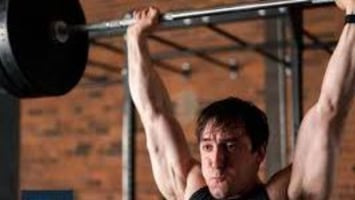Welcome back to part three of the four part series on shoulder archetypes in the CrossFit athlete!...
Unlock Your Rotational Power with Hip & Thoracic Mobility
Growing up, I was heavily involved in competitive tennis. While I did experience an achilles injury that kept me out of the game for a while, I was generally able to avoid other injuries. However, my focus shifted to weight training during my last year of physical therapy school, and I began to experience severe pain in my lower back while squatting. It became difficult for me to even tilt my head back to shower, so I contacted a physical therapist and chiropractor at my clinic in a state of panic. After testing, it was determined that I had a significant loss of hip rotation and muscle imbalances. This personal experience taught me the vital role that hip mobility plays in overall health and well-being.
Hip rotation mobility requirements are not exclusive to tennis players, it is key for various athletes including boxers, MMA fighters, baseball players, golfers, and many more. It is crucial to have adequate hip rotation for your sport in order to protect your lower back. Contrary to popular belief, the lumbar spine (low back) contributes minimally to spinal rotation. Its total rotation accounts for only about 13 degrees according to Shirley Sahrmann. So where does the rest of it come from? Your hips and thoracic spine (more on the thoracic spine later)!

Your hip is a ball in socket joint that allows it to move through three planes of motion. These include flexion/extension, internal and external rotation, and translation within the hip capsule. While all three planes of motion are important, internal and external rotation are often where we find the biggest limitations. Watch the video above to test your hip mobility.
While the standard “norms” for hip rotation are 45 degrees in each direction, we find this doesn’t cut it for Conquer Movement athletes, and the high demands during their sports. Without full range of motion in the hip, athletes are unable to strengthen their muscles through the full range of motion, limiting how much power they will be able to generate from their hips. Without a powerful drive from the hips, it has to come from somewhere else: *Cue low back rotation compensation* We often find hypermobility, or too much mobility, in our athletes’ lumbar spines. This excess mobility puts increased demand on the core muscles and deep stabilizers, forcing them to work overtime.
The good news is that with a consistent effort performing specific mobility drills, you too can achieve optimal hip mobility! It is important to keep in mind that as your hip mobility improves, it is critical to work on strengthening and stabilizing your hip through your new range of motion. Otherwise, you’ll end up with a very mobile, but unstable joint.
Here are some of my favorite hip mobility drills to keep you moving better:
- quadruped banded IR
- 90/90 hip internal rotation
- Banded pigeon stretch for external rotation
- Shin box internal and external rotation
Here are some of my favorite hip strengthening drills to reinforce that mobility.
If your sport requires generating any type of force while rotating (boxing, MMA, golf, tennis, etc). then putting some of these drills to work can make the difference between being a high performer or left possibly dealing with some nagging aches and pains during your training.
Thanks for reading!
Dr. Eliza Cohen PT,DPT
Conquer Movement - Wilmington, NC




